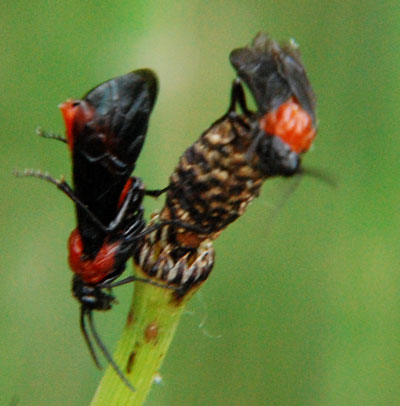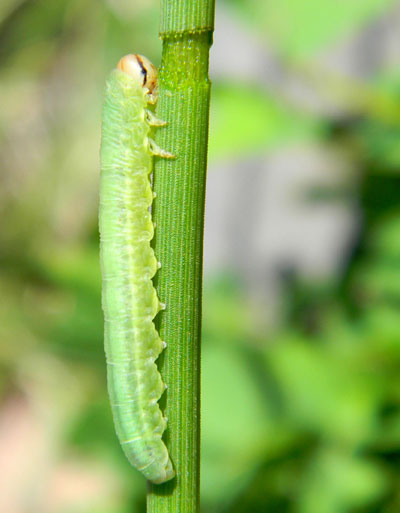Sawfly
Dolerus tejoniensis

This pair of sawflies were observed along Mesquite Wash, Maricopa County, Arizona April 2009. The plant they are on is Common Scouring Rush (Equisetum hyemale) which was growing in wet, springy soil. Identification to species provided by Dave Smith, Research Entomologist (retired), Systematic Entomology Laboratory, USDA, c/o National Museum of Natural History, Smithsonian Institution, Washingon, DC.
Tenthredinidae -- Common Sawfly Family
Sawflies don't look much like their wasp and bee brethren, and they lack a stinger as well and are thus harmless to people. The sawflies shown here are apparently aposomatic - i.e. marked with warning colors - like many bees and wasps. However, in this case the warning is for a toxic chemical within their bodies that could make them unpalatable to insectivores.

Sawflies are plant feeders in their immature stage occurring on leaves and looking like rather odd caterpillars. Some can be pests on crops or ornamentals. A little more than a year after the adults at left were photographed (15 May 2010), I found a number of larvae in a stand of equisetum about 15 km away along the same drainage. Notice that the larva feeds around the stem, thus girdling it; equisetum do not have true leaves. Like many plant feeding insects, this relationship is likely obligatory; i.e. only one small group of plant species can be used by the immature stage. Adults feed little at all, possibly on some flower nectar; their main purpose is to mate and lay eggs for the next generation.